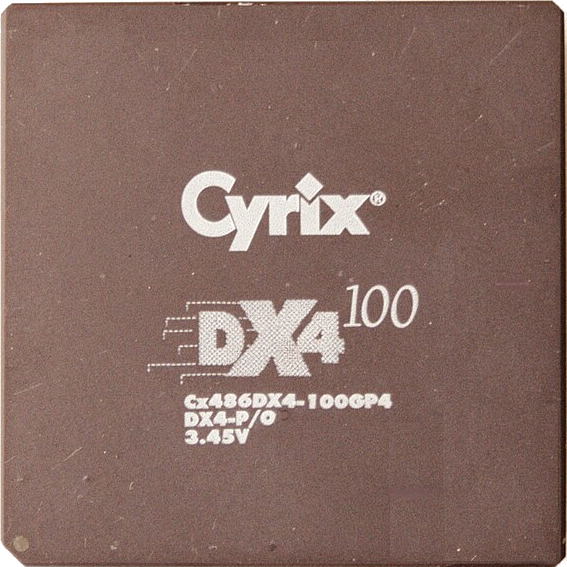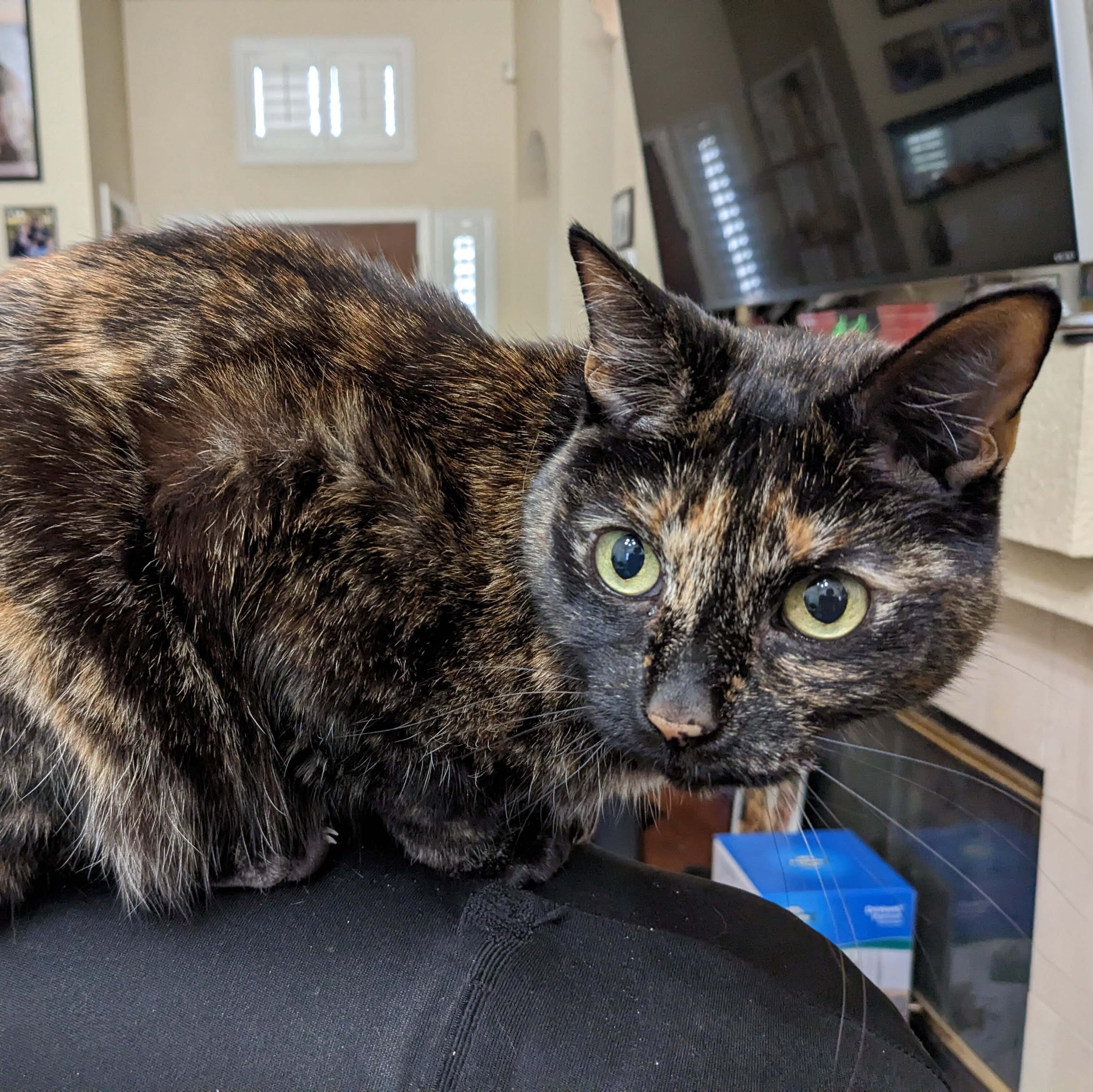I have backups on a backup hard drive and also synced to B2, but I am thinking about backing up to some format to put in the cupboard.
The issue I see is that if I don’t have a catastrophic failure and instead just accidentally delete some files one day while organising and don’t realise, at some point the oldest backup state is removed and the files are gone.
The other thing is if I get hit by a bus and no one can work out how to decrypt a backup or whatever.
So I’m thinking of a plain old unencrypted copy of photos etc that anyone could find and use. Bonus points if I can just do a new CD or whatever each year with additions.
I have about 700GB of photos and videos which is the main content I’m concerned about. Do people use DVDs for this or is there something bigger? I am adding 60GB or more each year, would be nice to do one annual addition or something like that.
I decided instead to use ZFS. Better protection than just letting something sit there. Your backups are only as good as your restores. So, if you are not testing your restores, those backups may be useless anyway.
ZFS with snapshots, replicated to another ZFS box. The replicated data also stores the snapshots and they are read-only. I have snapshots running every hour.
I have full confidence that my data is safe and recoverable.
With that said, you could always use M-disk.
I have automated backups including to cloud, but I want a separated manual system that cannot get erased if I mess something up (accidentally sync a delete, lose encryption key, forget to pay cloud bill). I have 3 2 1 but it’s all automated and backups are eventually replaced, if it’s not a critical failure I won’t necessarily know I’ve lost something.
Basically, I specifically want cold storage, and not cloud. I will only add, not delete from it. And I don’t want it encrypted.
Based on other conversations I’m planning on using duel disks mirrored, zfs, annual updates and disk checks with disks rotated out every 5 years (unless failing/failed). Handling the need for layman retrival of data by including instructions with the hard drives.
That sounds like a really good idea. You basically get the best of everything.
The cool thing about ZFS is the pool information is stored on the disks themselves. You can just plug them in and import the pools.
Basically, I specifically want cold storage, and not cloud. I will only add, not delete from it. And I don’t want it encrypted.
I have a client with a photographic studio. To give you an estimate, his data is around 14TB of mostly camera pictures with approximately 20 years or history and the owner believe it or not, relies on multiple external hard drives for cold storage, he has a 2TB Seagate thats like 2011-2012 old which still works.
To put in a cupboard tho, M disc is your best bet.
I usually use a dehydrator for ~3 days on my drives to make them shelf stable. So far I haven’t had any issues.
This will do nothing at all. Drives don’t die by rust. They usually die because the motor somehow can’t get the discs to spin. Very often dry lube is the reason. That can occur if you leave the drive off too long.
For your amount, just an external hard drive attached to a NAS or something is fine, or a 2-bay synology would be more than enough. Drives are coming in 20-24TB models now, that’d keep you going for a long time.
I’m using blu-ray disks for the 3rd copy, but I’m not backing up nearly as much data as you are.
The only problem with optical media is that you should only expect it to be readable for a couple of years, best case, at this point and probably not even that as the tier 1 guys all stop making it and you’re left with the dregs.
You almost certainly want some sort of tape option, assuming you want long retention periods and are only likely to add incremental changes to a large dataset.
Edit: I know there’s longer-life archival optical media, but for what that costs, uh, you want tape if at all possible.
Same.
Bought a Blu-ray burner and “archive grade” disks for third location backups.
I made a list of files that is just a text document (3MB!) that sits on the root of the Blu-ray. There’s probably a better way of doing that, but it works for me.
Hmm I am keen for something that could be left in the cupboard for 50 years and still works when brought out.
What does it take me to do home tape storage? Do the tapes needs to be stored with climate control or are they pretty stable? Is it feasible for the average person to load the contents?
I’m thinking of pulling a suitcase out of the cupboard of all the baby photos, but digital files or photo and video.
So, 50 years isn’t a reasonable goal unless you have a pretty big budget for this. Essentially no media is likely to survive that long and be readable unless they’re stored in a vault, under perfect climate controlled conditions. And even if the media is fine, finding an ancient drive to read a format that no longer exists is not a guaranteed proposition.
You frankly should be expecting to have to replace everything every couple of years, and maybe more often if your routine tests of the media show it’s started rotting.
Long term archival storage really isn’t just a dump it to some media and lock it up and never look at ever again.
Alternately, you could just make someone else pay for all of this, and shove all of this to something like Glacier and make the media Amazon’s problem. (Assuming Amazon is around that long and that nothing catches fire.)
Hmm damn. I don’t really think cloud is the right answer for what I’m trying to do.
I disagree that formats like JPEG won’t be readable in 50 years. I feel like there would be big demand for being able to read the format even if it’s been superceded, on account of all the JPEGs that still living people have.
Maybe I get a big drive. Each year I copy over files from the last year. Every X years I swap the hard drive for a new one, copy all data.
How can I tell if individual files get corrupted? Like the hard drive failed in that section, then I copy the corrupted file to the new drive, and I’d never know. Can I test in bulk? 50k+ photos and videos so far.
How can I tell if individual files get corrupted?
Checksums. A good filesystem will do this for you, but you can do it yourself if you want.
If you sync a drive with rsync or something periodically, it’ll replace files with different checksums, fixing any corruption as you go. Then smart tests should tell you if there’s any corruption the drive is aware of. I’m sure automated backup tools have options for this.
I specifically don’t want to be touching previous files on the drive, it should be addition only. So I may need to write a script to do the checks, or compare against a mirror drive. I can do this with the right filesystem, but I’m worried that if I use a filesystem not readable by Windows then it may not be layman-proof enough.
Any file systems Windows can read out-of-the-box are no good file systems. What Windows read? FAT and NTFS. Former is so basic it has no mechanisms to detect errors and bitrot and the later one is a mess.
You should stick to ext4, btrfs and zfs.If you want to make if fool-proof then add a sticker with ‘bring me to a computer shop to access my content’.
I have considered that exact message. It does seem making it easily plug and play may be out of the question if I want the error correction capabilities.
Then I’d go with FAT on a USB, which should be plenty portable into the future. You’ll want to replace it every 5-10 years, and check on it every other year or so.
That’s about as easy to use as I can think of. Decades down the road, physical media like DVDs and tapes may be difficult to find readers for, but USB is versatile enough that someone is bound to have access. Micro SD cards may also be a good option, as long as you keep a couple USB readers around.
I have a terrible track record with USB sticks, including completely losing a stack of photos because of a USB stick.
I’m now thinking the benefits of a nice error-correcting file system probably outweigh the benefits of using a widely supported one. So I might use a pair of mirrored hard drives with SATA->USB cable, then include instructions along the lines of “plug into my linux laptop to access, or take to a computer repair show if you can’t work it out”.
The format is the tape in the drive, or the disk or whatever.
Tape existed 50 years ago: nothing modern and in production can read those tapes.
The problem is, given a big enough time window, the literal drives to read it will simply no longer exist, and you won’t be able to access even non-rotted media because of that.
As for data integrity, there’s a lot of options: you can make a md5 sum of each file, and then do it again and see if anything is different.
The only caveat here is you have to make sure whatever you’re using to make the checksums gets stored somewhere that’s not JUST on the drive because if the drive DOES corrupt itself, and your only record of the “good” hashes is on the drive, well, you can’t necessarily trust those hashes either.
Ah good thinking. I am thinking a spare drive that I update once a year with new content and replace every few years with a new drive is a good idea.
That could probably work.
Were it me, I’d build a script that would re-hash and compare all the data to the previous hash as the first step of adding more files, and if the data comes out consistent, I’d copy the files over, hash everything again, save the hash results elsewhere and then repeat as needed.
Tape isn’t readable by normal people even if they found it tomorrow with a drive already configured to be used.
In 50 years good luck finding a working drive compatible with LTO4 when LTO32 is out (it’s backwards compatible only with previous gen).
Unless you write on the box “here there are the keys for 100k bitcoins” they’ll just trash the tape
Yeah from some other comments I think my initial plan (that I’ll research some more) will be:
- buy a new HDD, format with ZFS or btrfs for error correction
- copy data onto drive
- store in cupboard with sata-> USB cable and instructions about what it is, how to access .
- every year, load the previous year’s data onto the drive
- about every 5 years, replace the drive by copying onto a brand new one (timeframe will likely depend on when my other HDD drives die)
This way I should get a chance to update storage medium as technology changes as well.
you need to use fat32 if you want normal people to access the files
Otherwise, they will get the “You need to format the disk in drive D: before using it. Do you want to format it?” dialog, they blindly click “yes”, then they will mumble to themselves “weird, he left behind a massive collection of blank drives…”
This is why I can’t/don’t have a lot of the “best practices” in my family archive. I’m not encrypting local drives, I’m not using BTRFS, or a ZFS pool. If I did I’d have to ensure my Will provided for the lawyer to hire a tech shop to help recover them. No, exFAT and NTFS, in the clear so those left behind can just plug them in and get to making their own copies. Otherwise the archive would die with me.
Does that mean someone could steal my drives and go through my family photos? Sure. I hope it brings them much guilt, something a garbled encrypted drive could never do.
Oh shit you’re right. Argh ok I’m going to have to rethink that. Two drives and something to compare against each other to check for errors. I’m not sure about FAT32 as there are some multi-GB video files. Shit.
exFAT is a newer and viable alternative to FAT32, with better size limits and some pretty good cross-platform capabilities. That said, if your primary access is through Windows, NTFS may have some better features and is at least read-only on other platforms.
Tape. Amazon glacier if you’re okay with that.
And regular test restores. An untested backup is not a backup.
But when considering what I need to back up, I usually overestimate how much I or other people will care if it’s lost. Family photos are great, but what are the odds of someone saying "damn I wish we still had two dozen photos of that one barbecue?*
I use tape but haven’t been happy with my drive for a while, where do you get your drives? (Also OP I wouldn’t recommend tape until you cross the 10TB mark personally)
Yeah after looking at the price of a drive, I agree it doesn’t seem necessary at the level of data I have.
I don’t personally use tape, but I get most of my stuff from eBay. Tape drives are surprising expensive, even LTO-6 is going to run you a few hundred. But you still can’t beat the density and longevity.
I believe M-Disc to be the best consumer grade, optical solution out there. If you want to go commercial grade you are looking for LTO tapes, but your costs begin rising exponentially. If M-Disc claims are to be believed, they should last well longer than your requirement and be able to handle your data footprint using multiple, but not an unreasonable amount of discs.
No matter which solution you choose, if you are targeting multiple decades, you must save not only the media, but ideally the drive, computer and software used to archive. There is no guarantee that any of the existing technology will be relevant or backward compatible across several decades.
The other thing is if I get hit by a bus and no one can work out how to decrypt a backup or whatever.
Documentation, documentation, documentation. No matter what system you have, make sure your loved ones have a detailed, image-heavy, easy to follow guide on how restorations work - at the file level, at the VM level, at whatever level you are using.
That being said, DVDs actually have quite a short shelf life, all things considered. I’d be more inclined to use a pair of archival strength USB NVME drive, updated and tested routinely(quarterly, yearly, whatever makes sense). Or even an LTO tape, if you want to purchase the drive and some tapes.
You can put your backups in something like VeraCrypt. Set an insanely long password, encoded in a QR code, printed on paper. Store it in the same secured location you store your USB drives (or elsewhere, if you have a security posture).
You may also consider, if money is not a concern, a cloud VPS or other online file storage, similarly encrypted. This can provide an easy URL to access for the less tech-savvy, along with secured credentials for recovery efforts. Depending on what your successors might need to access, this could be a very straightforward way to log into a website and download what they need in an emergency.
As much as I’m worried about family not being able to do it, I’m just as worried that I will do something dumb and lose the encryption key, losing everything. I am keen on the digital equivalent of a suitcase full of photos that could be stumbled upon.
I also already have borg backup set up to a backup drive and synced to the cloud (Backblaze B2).
For tape drives, is many thousands of dollars a normal price? Not sure I’m that keen.
If you buy your LTO drive new, then yes they rip you a new one, for sure! Buy it used…but it still will cost you a few hundred. Like I said, if money is not a concern. If losing the encryption key is a concern, then USB is still your best bet. Make two, keep them simple and unencrypted, stick em in two different safes, update them regularly. And print the documentation with pictures!
archival strength USB NVME drive,
Does such a thing exist? Ordinary flash storage is pretty bad at keeping its content when powered off for a long time, due to how flash memory works. I’d be curious about such drives.
USB hard drive? If we’re talking about a cold backup that’s easy to access a USB drive is reliable and easy.
For photos? Archival prints. As a bonus, you also get a cool album to reminisce later in life.
I don’t want to sort through the 50k photos, and can’t print videos. I’m hoping in 10 or 20 years I’ll be able to feed it into AI to spit out all the best ones, then I’ll consider it.
We do have photos printed, but only a very small percentage of the total.
Completely understandable. I say this as someone with way more photos in digital only media than I should.
I’ve decided I should have a small number of physical prints, as extra redundancy. I’m thinking I’ll print 100 each year to store with the hard drive backup.
After reading the previous discussion I think that you should get more than single drive to store cold backups. That way you can at least spread out the risk of single drive failing. 2TB spinning drives are pretty cheap today and if you have, for example, 4 of them, you can buy one now, write your backups to it and in 6 months buy another, write data on that and so on.
This way you’ll have drives with year or two difference on purchase date, so it’s pretty unlikely all of them fail at once and a single drive gets powered on and checked every other year or so. My personal experience is that spinning drives are pretty stable on the shelf, but I wouldn’t rely on them for decades. And of course even with multiple drives you’ll still want to replace them every 3-5 years each. Plus with multiple drives, if I were to build setup like that, I’d set up some sort of scripts or other solution where I can just plug the thing in and doubleclick an icon on desktop to refresh the data and maybe get a notification automatically that the drive you’re using should be replaced.
And for actual, long term storage, printouts are the way to go. At least in here you can get books made out of photo paper with your pictures. That’s one media which is actually stable over long period and using them doesn’t require a lot of technical knowledge nor hardware. But I’d still keep digital copies around, as the printouts aren’t resistant to things like house fire or water damage.
Yeah I am thinking of getting a couple of drives and cloning across both. Update both at the same time. I didn’t think of getting two drives at different times but that makes sense, thanks for the suggestion!
I am thinking printouts is a good idea too. I might get a big container, and keep a couple of mirrored drives as well as say 100 photos from each year. Every year I update the drives with additions and then print 100 photos from the previous year to add to the collection.
I personally prefer printed out books of our photos. We are missing quite a few years due to life getting in the way, but the end goal is to have actual books of photos with titles like ‘Our family in 2018’ and ‘Sports of our first born at 2022’. In europe we have a company called ‘ifolor’ where you can design and order printouts of your photos. They’re not really cheap, but the quality is pretty damn good. And their offerings go to pretty decent sized photo albums, up to A3 size and 180 pages (which is over 200€). So, not cheap, but at least so far their quality has been worth the money.
And they have cheaper options too, but personally I think it’s worth the money to get the best quality you can for printouts. And even the smallest and cheapest option is far superior over not having anything at all due to hardware failure or whatever.
Just buy a spinning drive and call it a day. Follow 3-2-1 protocol and you’ll never lose anything . Check your longterm “cold storage” HDD’s 1-2 times a year. They should last 5-10 with little fuss. Some will go longer with no issues.
If you follow 3-2-1 you’ll never lose anything and you only have to spend a few hours a year thinking about backups.
I have 3 2 1 but I want the equivalent of a suitcase of photos in the cupboard. No family member is gonna be cleaning out my house as they move me to a rest home and stumble upon my Borg backup in B2 object storage. And if they do they won’t have the key. I want something a bit closer to physical.
I think an extra drive for cold storage is a good idea. My main backups are automated, this one I can add any new files done in the last year once a year, then back in the cupboard. I just need to make sure I’m rotating the drives so I don’t have the same one in storage for 50 years, and instead buy new ones every 5 years or so.
If this is your fear, why not just have a will or something that specifically describes what to do and where to go?
Exactly. I have a document for my SO that describes what to do if I pass (where the money is, how the WiFi is set up, various important accounts, etc). It’s not a will (nothing about who gets what, though that’s assumed by the state to be my SO, or my kids equally if we pass together), just a document that explains the stuff I handle.
I have such a document, but it’s not quite the same. I’m just as worried about my dumb ass losing the borg key and all data along with it…
I’m thinking a clearly labelled hard drive with instructions, rotating the hard drive with a new one every 5 years or so.
Don’t use them, but these seem right for you: https://lemm.ee/post/55012343
Thanks, I missed that post! Looks like the comment section would have answered a lot of my question.
In the end I have pulled the trigger and bought an M-Disc capable burner and a stack of M-Discs, so I’m gonna give that a go and see how it works out.
Sounds good. They do make 100GB MDisc but they are a shorter life span: https://a.co/d/dTOLvW8
What makes you say they are shorter life span? The 25GB and 100GB both have the same “several hundred years” claim.
Oops, just me misreading.
ZFS with automatic snapshots and scrubbing. This will keep as many and as old snapshots as your like. It’ll ensure the files don’t rot. It’ll ensure the media doesn’t die, so long as you have enough redundancy and you replace disks as they die. This is what I’d trust for long term storage because I think I understand how and why it works. It should last as long as I feed it disks. If I delete something, I should be able to restore it from a snapshot. The hardware doesn’t need to be anything fancy. Just a Pi 4/5 with a couple of WD Elements would be fine. Could add more disks for more redudnancy. I’m running 2-disk residency.
You don’t have to touch the software if it’s not exposed to the Internet. Whatever works today on it will work 20 years from now, so long as the hardware works. A couple of spare Pis, SD cards and power supplies should let it last for decades.
I’d rather cold storage but am thinking of looking along these lines, ZFS or btrfs on a standard HDD that I add files on to once a year and replace the disk every few years.
I have a standard backup setup I just want something that is more point in time and not connected to all the automation, in case I automatically delete everything.
Yup, turn it on, let it do a scrub, then turn it off. I’d still use redudnancy though. Not merely to cover the case of the drive failing, but also to cover the bit rot use case. It’s exceedingly unlikely bits to rot at the exact same spot on two or more disks. When ZFS finds a checksum mismatch during a scrub (which indicates bit rot), it’ll be able to trivially recover the data from the drive where the checksum matches. It’ll then rewrite the rotten part.
Would that be two disks under a type of RAID or does ZFS have something?
With 2 disks that would be type mirror in ZFS-speak, completely built-in. Equivalent to RAID1 in terms of hardware fault tolerance.
You could do a 3-disk mirror or n-disk mirror really. The RAID5/6 rough equivalents are called RAIDzN where N is the number of disk failures they tolerate. E g. RAIDz1, RAIDz2, etc. You probably want a mirror unless you need more space than a single disk provides.
Ah thanks, that gives me something to research.
Thinking about this, the only ancient information we are still able to access is painted or edged on stone or clay. How about some sort huge wall with thousands of QRcode like engravings?
Reminds me of project Silica. Media historically was more durable (stone/ ink and cloth paper, etc) but had a low data density. As density increased, so did fragility
I have not used them myself, but M-DISC sounds like what you’re looking for. There are a few other alternatives listed on that Wikipedia article, too.
Thanks, I think the risk here is that there may not be hardware to read it.
From the suggestions here I’m thinking a hard drive with USB connection would be best. It won’t last 50 years but instead I’d replace it every 5 years or so. I’d use an error resistant file system and plug it in each year to add the new files.
This way I also get the chance to move it to newer technology in future instead of a new hard drive. It would then only need to survive for some period of time after I last replaced it, so there’s a good chance of it remaining readable for most of my life.
Thanks, I think the risk here is that there may not be hardware to read it.
M-Disc DVDs are readable by ordinary DVD drives. So you could simply put a USB DVD drive alongside those backup M-Discs on the shelf.
Yeah that’s an idea. It does seem like I’d need a lot of disks though. And I don’t actually have a disk reader or writer at all at the moment.












